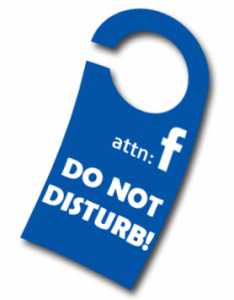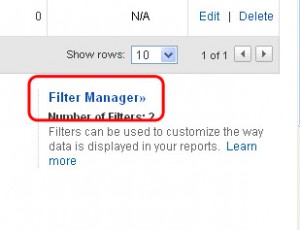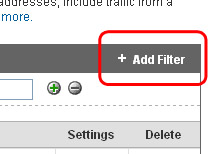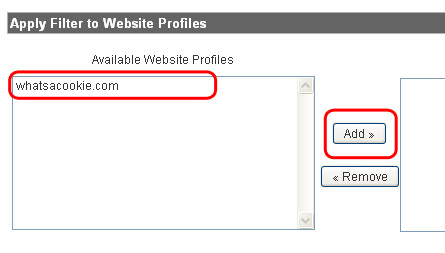 Sigh. Another Facebook privacy policy update…another user pushback.
Sigh. Another Facebook privacy policy update…another user pushback.
This time, numerous complaints have been filed with the United States Government, and even more have likely been sent directly to Facebook. It has become clear (at least to me) that there is a logically flawed startegy here…
The Facebook Paradox: They have the most valuable and extensive database of individualized user information that has ever existed, but the only way to use it results in alienating the users that provided them this information in the first place.
So whats the big deal?
Well, when Facebook tries to make these less-than-subtle changes to their privacy policy, they are attempting to open up access to their user base. Particularly, they are trying to grant access to people who are willing to give them money: businesses, search engines, data miners, etc. Why are they so insistent on opening these doors?
Users aren’t free
Unfortunately for Facebook, individual users don’t bring in any revenue. They could have 99% of the worlds population, and they still wouldn’t have any revenue. To make matters worse, the annual expense per individual user has been estimated to be about $5 per year.
$5 per user per year sounds inexpensive, after all its only about $.42 per month. Or about 1.5 cents per day, which seems about right especially with the absurdly high average amount of time people spend on site each day.
So, even though they aren’t selling a “product” they still have overhead for personal users…server space, offices, executive and sales staffs, energy costs, etc. Just imagine how many hard drives it takes to store the 2.5 billion pictures that are uploaded every month…that adds up over time.
Take that measly $5 per user per year and throw in 350 million worldwide users, and all of the sudden we’re talking about $1.75 billion dollars in expenses – all from people who aren’t going to buy anything from your company, ever.
Unbelievable growth
 It has become very clear since Facebook’s inception that getting personal users is the easy part. They are the 4th largest website in the world, in terms of overall traffic. They have 350 million users. People spend HOURS sharing with their friends, family, and coworkers. Its a service that has filled a great need in today’s digital age.
It has become very clear since Facebook’s inception that getting personal users is the easy part. They are the 4th largest website in the world, in terms of overall traffic. They have 350 million users. People spend HOURS sharing with their friends, family, and coworkers. Its a service that has filled a great need in today’s digital age.
Along with this mass user adoption, Facebook has truly created the worlds most valuable database of personal information. Not only do they have age, sex, location, preference, and email address…they also have ACTUAL NAMES! For those of you not in “the biz”, this is similar to the Holy Grail of marketing. Advertisements can be targeted not only to geographic regions (cheese products to Wisconsin, umbrellas to Seattle), but potentially to individual people who have specific interests and have a specific demographic profile.
While this is a marketing department’s dream, its a privacy nightmare for users. People signed up for the service not only because its incredibly useful and fun, because it was free and it was somewhat private – you only become friends with people whom you are comfortable with. Over time, user’s patience was tried when they started receiving “friend requests” from people they hardly knew…coworkers, people from grade school, and friends of friends. Only because the service was so useful did they tolerate their own self-inflicted privacy erosion.
What the H is Privacy Erosion?
Here’s a typical timeline for your average Facebook user:
- I’m not on Facebook. The only people who know my “personal updates” are people I tell in person, or people I send direct emails too. I have nearly complete control of my public reputation.
- I join Facebook. I invite a few close friends to become my friends. We share details about our personal lives, post funny updates, and chat all day long. The only people who can see any of my updates are people who I know well and trust. My privacy is a little bit lower, but these are things I probably would have told them anyways.
- My Facebook friend base grows a little bit. It now includes that guy from Jazz Band that I was friends with, and some college classmates that were friends of friends. I would prefer that they didn’t know certain things, but its not worth making a big deal about it. I’ll just be more careful with what I post, because I don’t feel comfortable saying “no” to some of them as friends. Now, my privacy is really starting to take some noticeable lumps, and I have to start being a lot more protective of the information I share – its no longer just my closest group of friends.
- Now my Facebook friend list include my entire 7th-Grade B-Team basketball roster, my church Pastor, my Grandma, and several people whom I’ve never heard of but apparently they know me. Everything I post gets distributed to an enormous network of people, and then even those peoples friends can potentially see it. I now have very little confidence that personal things I post will stay private, and the risk of a Boss of mine being somewhere in there is startlingly high.
- Now you want to allow businesses and corporations to see my info? Whoa whoa whoa, wait just one minute here….
The bottom line is with every additional friend or fan that was added, a users privacy was eroded a fraction of a percent. Get enough friends in there, and eventually privacy becomes a distant memory.
A line in the sand
But privacy amongst friends is different from privacy between businesses and consumers. After all, a business has no fundamental interest in becoming your “friend”, ultimately they have a singular goal of figuring out a way to separate you from your hard earned cashola. Thus, consumers have a lot less patience for relationships with businesses than they do with mildly obnoxious peripheral friends that insist on connecting through Facebook…at least they don’t want you to buy anything.
In the past few years, Facebook has tried several strategies for opening up the door for revenue, and all of them have been met with disastrous feedback from their user base. Just look up how well their Beacon program did. All joking aside, this latest Privacy Policy Rebellion is no surprise considering the result of some past attempts.
Will it ever work?
Somebody at Facebook needs to start asking: “will this ever work?” They have tried at least five different strategies at opening up individual profiles to businesses and other advertisers, and all of them have generated a public outcry from their user base so far. What’s the problem?
At a fundamental level, Facebook users signed up for the service under the presumption that it offered a way to connect with friends in a reasonably private environment. The fact that everything was reasonably confidential is partly why the site became popular…if their motto from the beginning was “sign up for our service to chat with your friends AND to let businesses secretly stalk you” they would have had a lot fewer people sign up.
Because they set the bar so unusually high from the start – free forever, unlimited storage, unlimited usage, unlimited friends, 100% control over your profile, etc – in terms of user expectations the only way they can move is down.
Facebook will continue their struggle to change horses midstream by opening user profiles up for public and corporate consumption. It would require convincing hundreds of millions of people that “its totally sweet and awesome to let businesses contact you!” and that will not happen anytime soon.
Its clear that just because users are willing to let their privacy erode amongst friends, that certainly does not mean they also will open themselves up to businesses.
But I see ads on Facebook all the time!
Display ads, as they are known, are the often-rectangular and traditionally-obnoxious advertisements that you see on the top, side, or bottom of a webpage. Unfortunately (for Facebook), they are very inexpensive for any small business to buy. For about $20 you can get a few thousand different eyeballs to at least see an ad. However, most people ignore banner ads, resulting in a low interaction rate.
On top of that, there are plenty of outlets for display ads, and thus tons of competition for Facebook. Any small business can advertise through Google’s AdWords sponsored links program, or even their local newspaper’s website for roughly the same price. Because of the high availability and low industry costs for display advertising, Facebook cannot charge a premium price for their advertisement. These display ads are not where they are going to make their billions of dollars back.
Just looking at their assumed expenses from daily operations…
If they make $500 per business advertiser, they would need 3.5 million advertisers just to keep the lights on with $1.75 billion. As of the writing of this article, they have a mere 1.6 million “fan pages”, and many of those are not advertisers (like me!). Sure, this is an over-simplification of a very complex issue, but you hopefully you can see the staggering amount of success that will be required for them to maintain profitability.
The ace up their sleeve is in hyper-targeted advertisements, because no other media channel has the ability to find such minute demographic groups. Facebook knows EVERYTHING about each individual user, whereas outlets like Google only know the websites that you tend to visit, and build an extrapolated user profile based upon your habits.
The only way to utilize Facebook user information to make big-time money is to change the fundamental reason why people use the service in the first place. Many users are already realizing this problem, and the beginnings of a mass Facebook exodus can be seen if you look hard enough.
The $9.5 Billion Gamble
Many many companies want a piece of the action here…the potential for cashing out is ridiculous. Even small businesses pay upwards of $30+ per name just to have the opportunity at new customers, so if Facebook can figure out a way to make this work they will be all set.
The only problem is that right now…its still merely a potential for ridiculous success.

 Just read a great article about mobile marketing for a restaurant in Oklahoma (
Just read a great article about mobile marketing for a restaurant in Oklahoma (


 From there, you’ll see four boxes popup up underneath where you need to enter the IP that you were supposed to write down earlier. If you ignored my advice, just open up a new window and find out what it is again. Remember not to enter the . (dots) in between each number (you can also enter an IP address range here if you wish, but most people won’t use that feature).
From there, you’ll see four boxes popup up underneath where you need to enter the IP that you were supposed to write down earlier. If you ignored my advice, just open up a new window and find out what it is again. Remember not to enter the . (dots) in between each number (you can also enter an IP address range here if you wish, but most people won’t use that feature). You can add multiple filters too! For example, I have one for my office and one for my home. That way if I’m doing work at either location the visits won’t pollute my statistics.
You can add multiple filters too! For example, I have one for my office and one for my home. That way if I’m doing work at either location the visits won’t pollute my statistics.